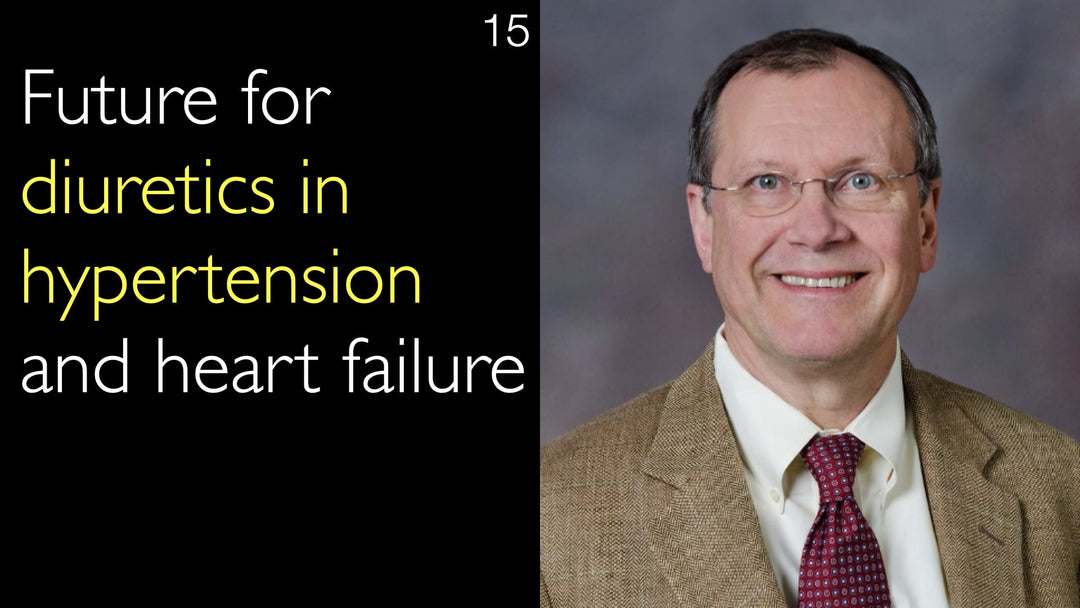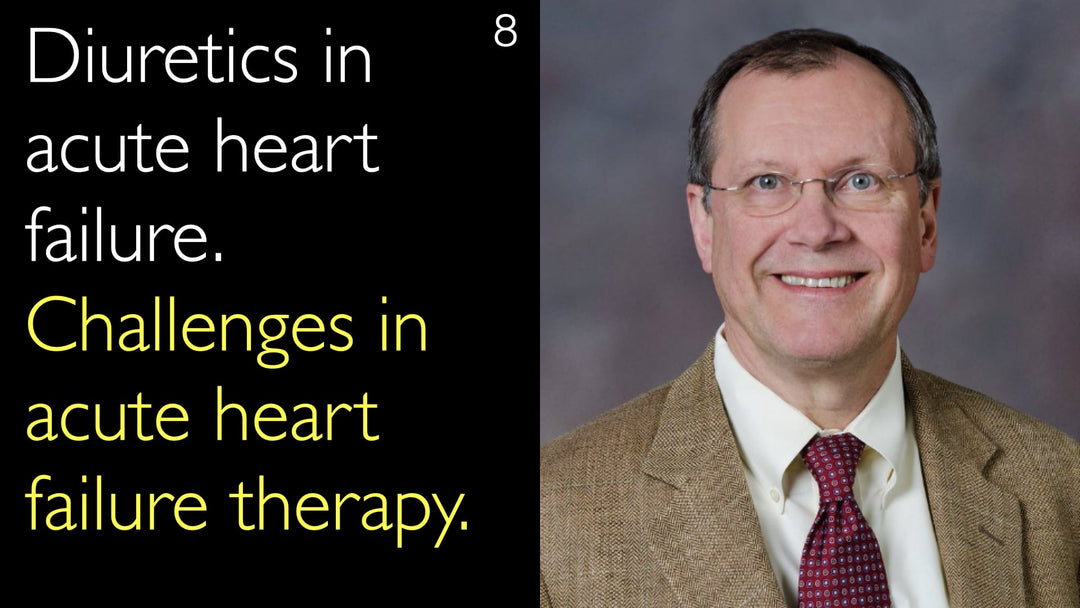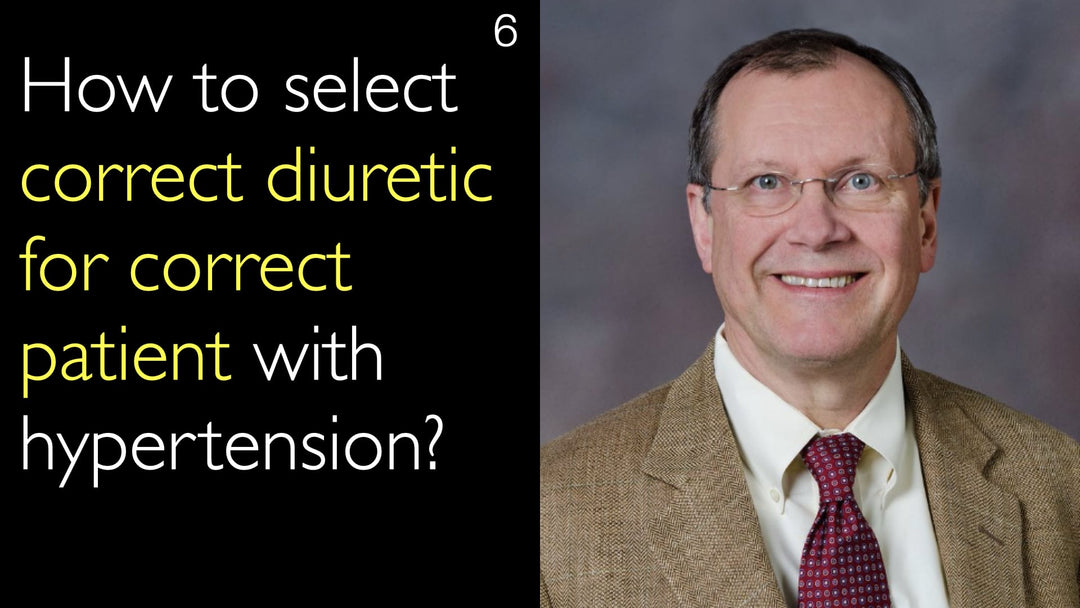Leading expert in aortic valve surgery, Dr. Juergen Ennker, MD, explains how to choose the best aortic valve replacement method. He details the benefits of the Medtronic Freestyle stentless valve for superior hemodynamics and patient recovery. Dr. Ennker outlines key patient risk factors and how individualized risk scores guide surgical decision-making to improve outcomes.
Optimal Aortic Valve Replacement Techniques and Patient Selection
Jump To Section
- Aortic Valve Replacement Techniques
- Medtronic Freestyle Valve Benefits
- Aortic Root Replacement Methods
- Preventing Prosthesis Mismatch
- Patient Risk Factors
- Surgical Risk Assessment
- Full Transcript
Aortic Valve Replacement Techniques
Dr. Juergen Ennker, MD, emphasizes that successful aortic valve replacement begins with understanding the patient's unique anatomy and disease state. The surgeon's primary goal is to implant a valve with the largest possible orifice to optimize blood flow and reduce pressure gradients across the new valve. Dr. Juergen Ennker, MD, explains that factors like severe calcification, valve insufficiency, or aortic root aneurysm significantly influence the choice of surgical technique.
Medtronic Freestyle Valve Benefits
The Medtronic Freestyle valve represents a significant advancement in aortic valve replacement technology according to Dr. Ennker. This stentless porcine valve, introduced in 1994, offers several critical advantages over traditional stented valves. The absence of a stent allows for a larger internal diameter and greater intraannular space, resulting in lower pressure gradients and improved myocardial recovery.
Dr. Juergen Ennker, MD, notes that patients experience faster recovery after implantation of this heart valve compared to conventional stented aortic valves. The unique design also enables the valve to be used for both standard aortic valve replacement and more complex aortic root procedures.
Aortic Root Replacement Methods
Dr. Ennker describes two sophisticated techniques for addressing aortic root pathology using the Freestyle valve. Total aortic root replacement involves complete resection of the native aortic root followed by reimplantation of the coronary ostia. The alternative aortic root inclusion technique involves implanting the Freestyle valve inside the patient's existing aortic root while still requiring coronary ostia reimplantation.
Both methods effectively resolve complex aneurysmal pathology while allowing implantation of a larger, more efficient prosthesis. Dr. Anton Titov, MD, discusses these advanced surgical approaches with Dr. Ennker, highlighting their importance in treating patients with aortic root disease.
Preventing Prosthesis Mismatch
Patient-prosthesis mismatch presents a significant challenge in aortic valve surgery, particularly for patients with small annular diameters. Dr. Juergen Ennker, MD, explains how the Freestyle valve uniquely addresses this problem through its adaptable design. Surgeons can cut into the noncoronary sinus of the valve to effectively enlarge the aortic root.
This technique enables implantation of a valve one or two sizes larger than possible with conventional stented valves. The result is significantly improved hemodynamics and better patient survival rates. Dr. Juergen Ennker, MD, emphasizes that this approach represents a major advancement in managing difficult anatomical situations.
Patient Risk Factors
Dr. Ennker identifies several critical patient-side risk factors that influence aortic valve surgery outcomes. Advanced age significantly impacts surgical risk, along with comorbidities such as renal disease and pulmonary disease. Patients requiring reoperations face increased complexity, as do those with previous myocardial infarctions.
The severity of heart failure, classified as NYHA Class II-IV, also substantially affects surgical risk assessment. Dr. Anton Titov, MD, and Dr. Ennker discuss how these factors must be carefully evaluated during surgical planning and patient counseling.
Surgical Risk Assessment
Dr. Ennker's team utilizes validated risk scoring systems to provide patients with personalized surgical risk assessments. In Europe, the euroSCORE system evaluates multiple patient variables to calculate individualized risk. The Parsonnet score serves a similar purpose in the United States, incorporating numerous clinical factors.
At Lahr Clinic, these risk calculations are based on experience with over 15,000 cardiac operations, providing exceptionally accurate predictions. Dr. Juergen Ennker, MD, emphasizes that this data-driven approach enables patients to make fully informed decisions about whether to proceed with aortic valve surgery based on their personal risk profile.
Full Transcript
Dr. Anton Titov, MD: Let's start our conversation with aortic valve replacements. Let’s discuss the risks of aortic valve replacement surgical operation. You have done thousands of aortic valve replacement surgeries. You used several techniques of aortic valve replacement. You also carefully match the patients to the best surgical technique. There are several aortic valve replacement methods. What are the risk factors for aortic valve replacement operation? How do you match patients with a method of surgical operation? How do you minimize surgical risks for the patient?
Dr. Juergen Ennker, MD: Yes, it’s very important! The patient, of course, is the most important risk factor. The anatomical situation of the aortic valve is important for the surgeon to understand. Are there substantial calcifications of the heart valve? Is there only the aortic valve insufficiency? The aim is to replace the diseased valve with a valve with a very large valvular orifice.
Dr. Juergen Ennker, MD: I found the Medtronic Freestyle aortic valve. It came on the market in 1994. Two years later, in 1996, I started to implant this aortic valve. This is a stentless heart valve. It is actually just a root of the pig valve. It has heart valve surface treatments, so it's not antigenic. You don't need a stent. This saves you an internal diameter.
A patient receives a Freestyle aortic valve. It has a larger internal diameter. It has a bigger intraannular space. This means less gradients and more rapid recovery of the diseased myocardium. Faster recovery of patient after aortic valve implantation.
Dr. Juergen Ennker, MD: In addition to this, a unique feature of the Freestyle valve is that it comes as a total aortic root. So you can use it for a root replacement in patients with aortic root aneurysm. You can get rid of aortic root aneurysm by two techniques.
The first one is total aortic root replacement. You resect the native aortic root of the patient. Then you have to implant again the coronary ostia. The other technique is the so-called aortic root inclusion. You implant the Freestyle heart valve inside the patient's aortic root. Of course, you have to re-implant the coronary ostia as well. So this is one indication.
Dr. Juergen Ennker, MD: Another indication for aortic stenosis heart surgery is this. The patient may suffer from patient-prosthesis mismatch. Patients who have a very small annular aortic valve surface (annular diameter) need an aortic root enlargement. Freestyle heart valve is excellent. It is adapted for this enlargement of aortic root.
Because you can cut into the noncoronary sinus, then you can implant a larger Freestyle valve. It is better in comparison to a typical stented valve. You can use a noncoronary sinus of the Freestyle valve as a replacement of the noncoronary sinus of the patient. Then you have enlargement by one or two grades larger than with typical normal stented heart valves. So this is a big advantage.
Again, this contributes to better patient survival. Because the patient does much better after implantation of this heart valve in comparison to a routine stented aortic valve surgery.
Dr. Anton Titov, MD: Thank you for this very good review of the technologies to replace aortic valve. You reviewed important heart valves that are used in aortic valve replacements. You have also identified a number of patient-side risk factors. They predict the risks of aortic valve replacement operations. In particular, patient's age predicts success of heart surgery. You also studied and published it extensively. What are the patient-side risk factors for aortic valve replacement surgical operation?
Dr. Juergen Ennker, MD: For patient risk factors, we have risk factor scores. In Europe we are using the euroSCORE. In United States, you are using the Parsonnet score. There are several patient-related risk factor variables. This is age, renal disease, pulmonary disease, reoperation, the state of their heart as graded by the New York Heart Association, Class 2, 3, or 4.
Dr. Anton Titov, MD: Are there previous myocardial infarctions?
Dr. Juergen Ennker, MD: You have a number of different variables. So you can calculate the risk score. I started working in Lahr clinic. We started to calculate the patients' risk factors for heart surgery. We are able to give a patient a risk score as a number. This score reflects a risk that patient will have in our hospital. It is based on the experience of more than 15,000 cardiac operations.
So everybody could make a decision about surgical operation. This decision is based on patient's personal risk. It is due to patient's personal risk factors. This is what we should tell our heart surgery patients. So that every patient can make an adequate decision whether to undergo heart surgery or not.







